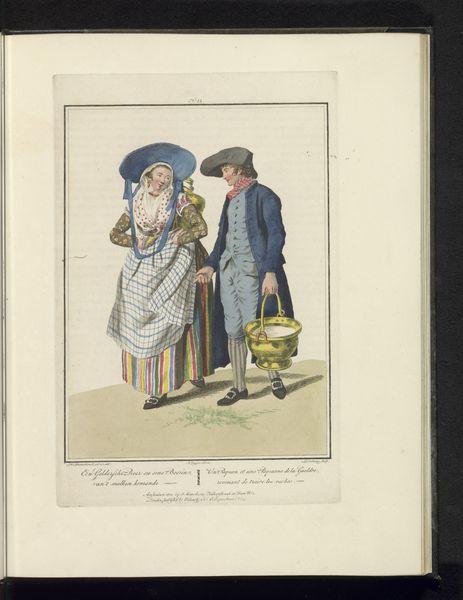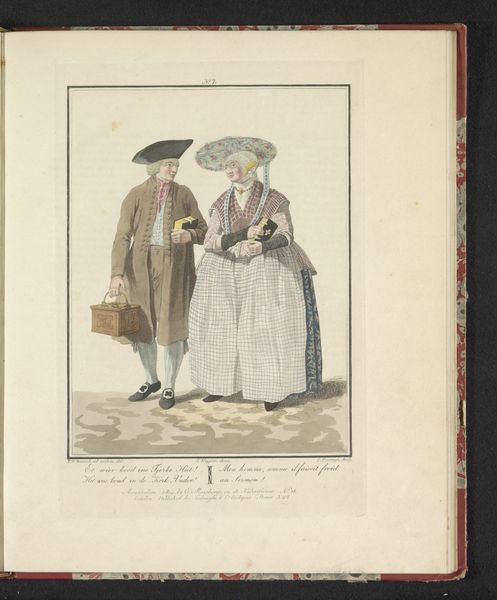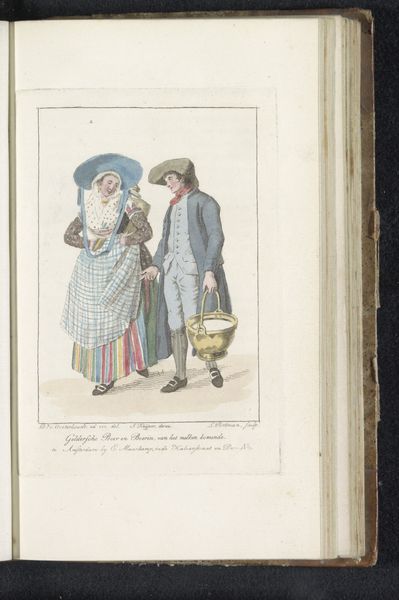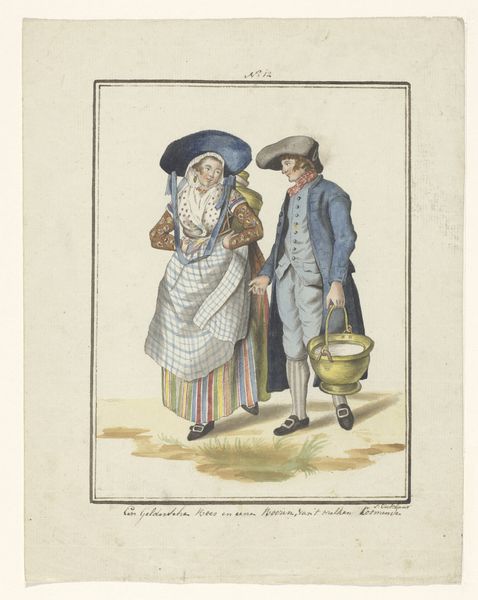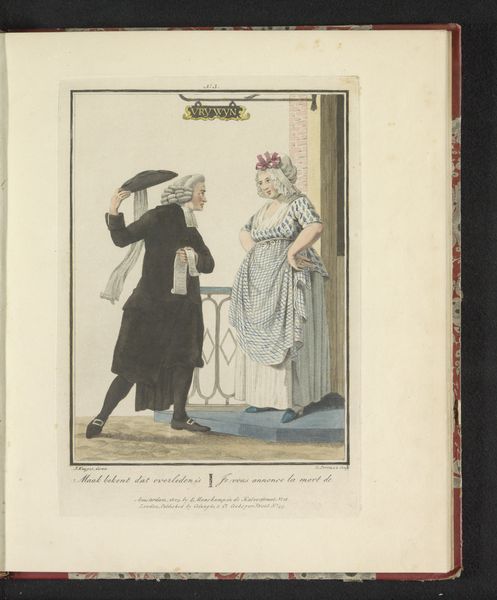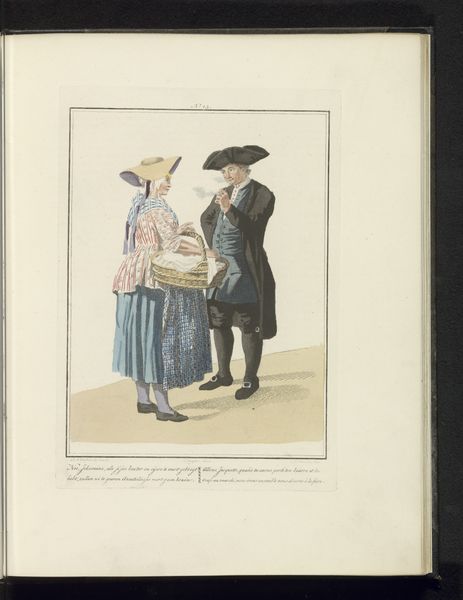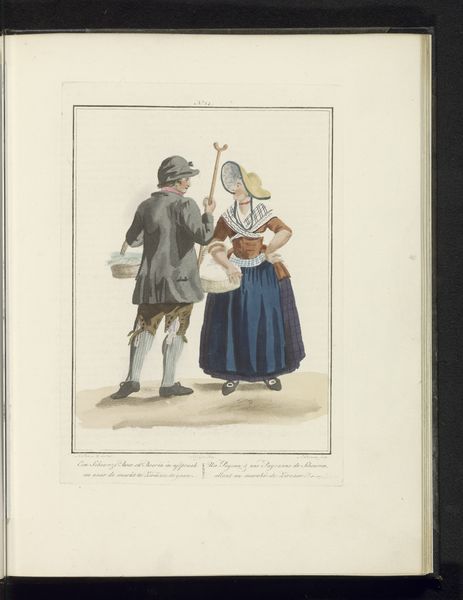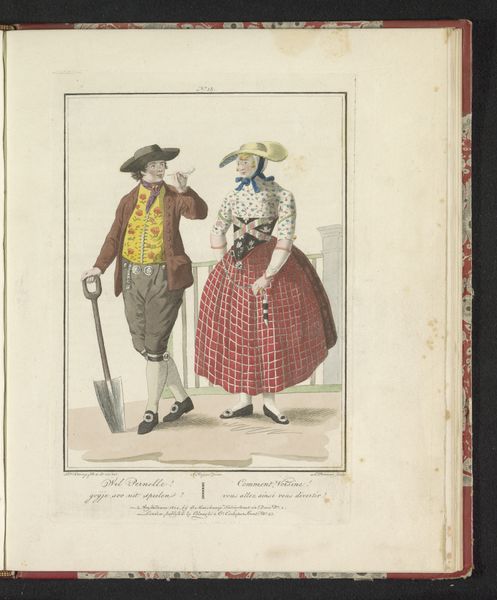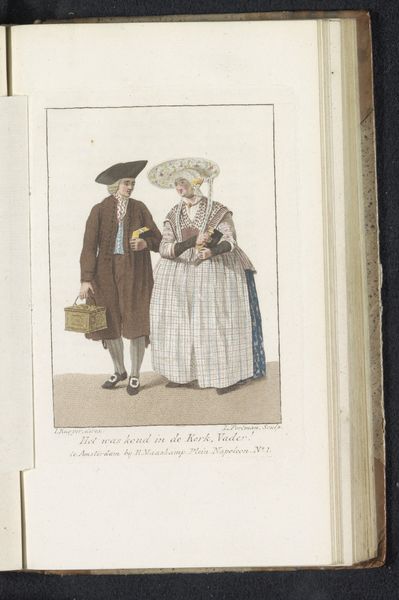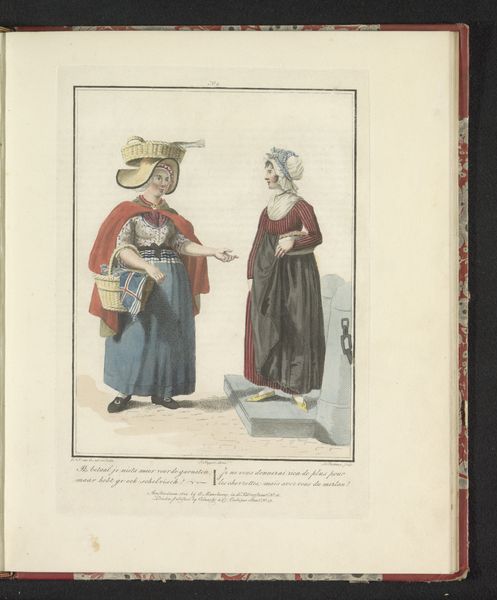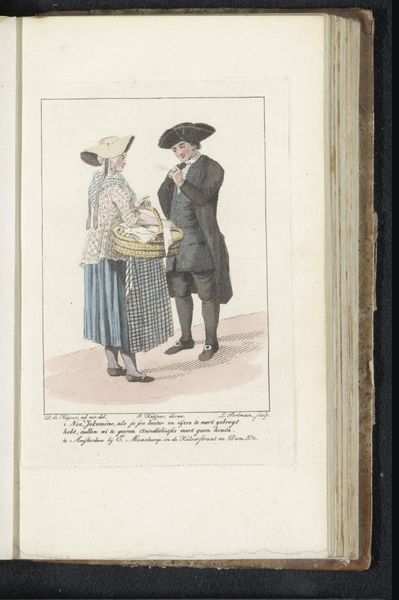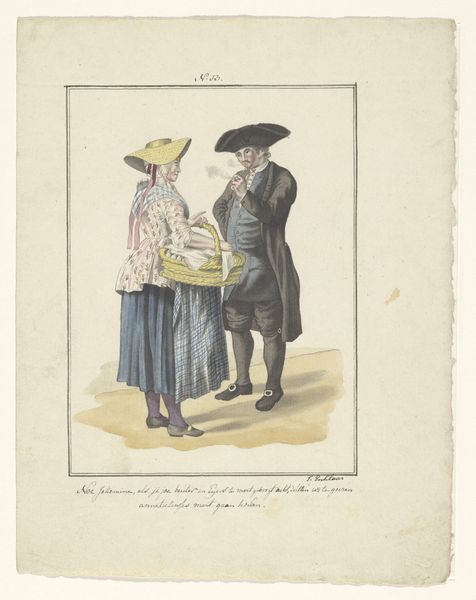
print, paper, engraving
#
portrait
#
water colours
# print
#
paper
#
coloured pencil
#
romanticism
#
genre-painting
#
history-painting
#
engraving
Dimensions: height 242 mm, width 160 mm
Copyright: Rijks Museum: Open Domain
Editor: This is "Gelderse boer en boerin," or "Gelderland Farmer and Wife," created in 1804 by Ludwig Gottlieb Portman. It's a print using engraving and watercolor, currently held at the Rijksmuseum. What strikes me most is the detailed depiction of their clothing. How would you interpret this work? Curator: This image provides a fascinating glimpse into the social and cultural landscape of the Netherlands at the turn of the 19th century. The meticulous detail in their clothing, as you noted, isn't merely aesthetic. It functions as a powerful marker of regional identity and social standing. The portrayal of specific regional attire gained popularity during this period; why do you think there was an increased interest in such imagery at this time? Editor: Perhaps because of the rise of nationalism, there was an attempt to visually codify regional and national identities? Curator: Precisely. This work also plays into the broader romantic movement and its fascination with rural life and "authentic" folk culture. However, we must also acknowledge the artifice. It subtly shapes perceptions of the rural population for a viewing audience increasingly centered in urban areas. Are they presented realistically, or is there a layer of idealization? Editor: I see what you mean. They appear somewhat picturesque, perhaps cleaner and more dignified than the reality might have been. It feels like there's a narrative being constructed about rural virtue. Curator: Exactly. And considering its display in a museum today, how does that historical layer of constructed identity influence our understanding? Is it history or cultural commentary, or both? Editor: I guess it makes me question how we perceive historical accuracy in art, and how much it reflects the values of the time it was created. I never thought about regional fashion in the 19th century holding so much meaning! Curator: Indeed, it’s a rich tapestry of history, politics, and artistic license.
Comments
No comments
Be the first to comment and join the conversation on the ultimate creative platform.
